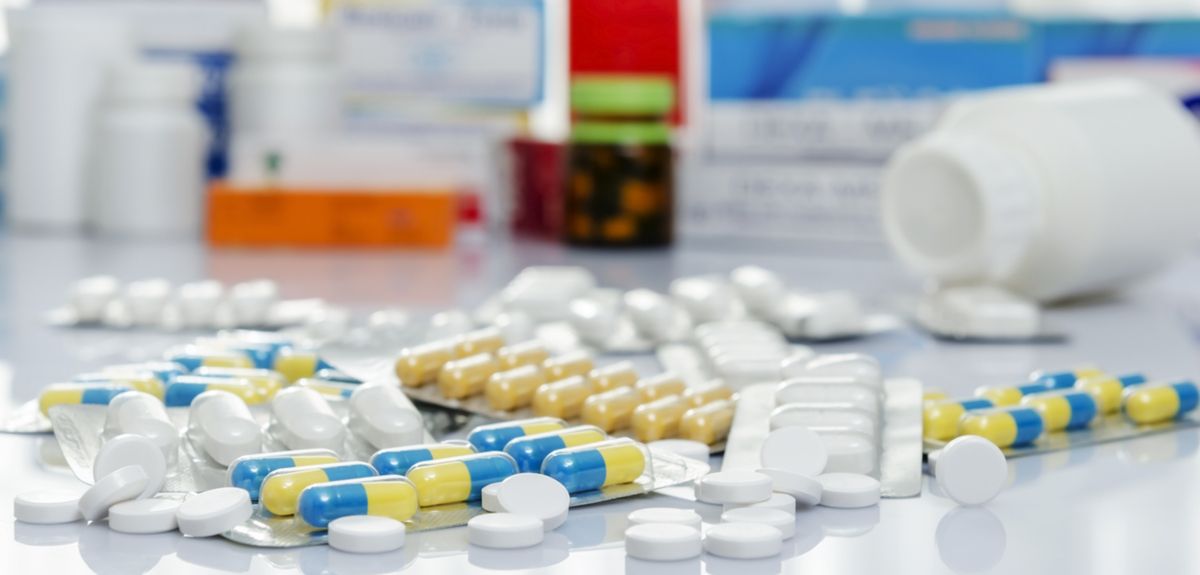
Image credit: Shutterstock
Detecting counterfeit medicines
Bernard Naughton and Dr David Brindley from Oxford University’s Saïd Business School and Medical Sciences Division discuss the problems of identifying fake, substandard and expired medicines.
Pharmaceuticals are critical to our society, supporting patient health and an innovative industrial sector. Research and development (R&D) by leading pharmaceutical companies totals hundreds of billions of pounds globally each year. These extraordinarily high development risks contribute to the sometimes high reimbursement costs of medicines. Therefore, it comes as no surprise, that as with most large and lucrative industries it attracts its share of bootleggers.
Counterfeit medicines are becoming a serious concern worldwide, and have increasingly been appearing through the legitimate pharmaceutical supply chain, including community and online pharmacies. This not only poses a health threat to the public but also to the balance sheets of pharmaceutical companies.
The Pharmaceutical Security Institute report that between 2011 and 2015 the global incidence of drug counterfeiting has increased by 51%, with 2015 seeing the highest levels of counterfeiting to date - a 38% increase when compared with 2014. In the UK supply chain alone, 11 cases of fake medicines were detected between 2001 and 2011.
These products vary immensely - fake medicines may be contaminated, contain the wrong or no active ingredient, or could contain the right active ingredient at the wrong dose. In any of these scenarios, patient safety is compromised.
There are a variety of methods currently used to detect counterfeit medicines, including laboratory-based methods and SMS texting. The detection of counterfeit medicines by customs officials usually occurs as a result of intelligence or random checks, after which suspect medicines are sent away for laboratory-based analysis. Advancing technology has made a variety of techniques available which include spectroscopy, chromatography, SMS, handheld or portable laboratories, radiofrequency identification and serialisation.
The recent advent of the EU Falsified Medicines Directive (FMD) mandates that all prescription medicines are serialised, verified and authenticated from February 2019 in all member states. Serialisation is the process of identifying a medicine with a unique code printed onto the medicines pack and verification is the process for identifying and checking that code. The term ‘authentication’ relates to the final scanning of a medicine and the subsequent decommissioning of a product at the point of supply to the patient to ensure authenticity.
In our own recent study, published in BMJ Open, we tested the effectiveness of a medicines authentication technology in detecting counterfeit, recalled and expired medicines within a large UK hospital setting. More than 4,000 serialised medicines were entered into a hospital dispensary over two separate 8-week stages in 2015, and medicines were authenticated using secure external database cross-checking, triggered by the scanning of a 12-digit serial code. In this instance, 4% of medicines included were pre-programmed with a message to identify the product as either expired, pack recalled, product recalled or counterfeit.
We found that the operational detection rate of counterfeit, recalled and expired medicines scanned as a combined group was between 81.4% and 87%. While the technology's technical detection rate was 100%, not all medicines were scanned, and of those that were scanned not all that generated a warning message were quarantined. Owing to an operational authentication rate of 66.3%, only 31.8% of counterfeit medicines, 58% of recalled drugs and 64% of expired medicines were detected as a proportion of those entered into the study.
The detection of medicines was largely effective from a technical perspective; however, operational implementation in a complex environment such as a secondary care pharmacy can be challenging.
The study highlighted significant quality and safety issues with this detection approach. There is a need for further research to establish the reasons for less than absolute authentication and detection rates in the hospital environment to improve this technology in preparation for the incumbent EU (2019) and US (2023) regulative deadlines.
In order to safeguard patients against potentially dangerous pharmaceuticals, it’s clear that we need to find an iron-clad detection system to filter out fake and expired products. It will also be vital to address the implementation approach to this technology whilst educating those who will use the system effectively and efficiently.
While we can’t stop the production of fake medicines, we can and must safeguard patients from them.
The full paper, ‘Effectiveness of medicines authentication technology to detect counterfeit, recalled and expired medicines: a two-stage quantitative secondary care study,’ can be read in the journal BMJ Open.
We would like to thank Prof. Stephen Chapman (Keele University), Prof. Sue Dopson (Saïd Business School) and Dr. Lindsey Roberts (Oxford Academic Health Science Network) for their support in this collaboration.